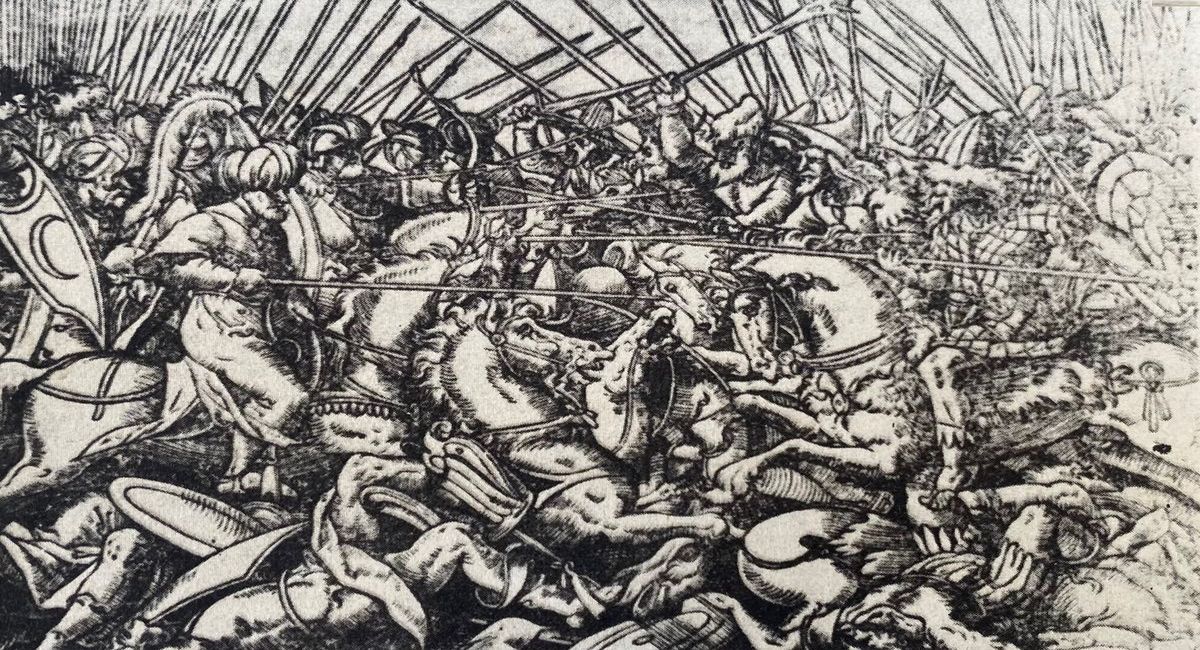
What happened at the Battle of Torvioll? The Battle of Torvioll, fought on June 29, 1444, marked a significant clash between the Ottoman Empire and the League of Lezhë, led by Skanderbeg. This battle took place in present-day Albania and was a pivotal moment in the struggle for Albanian independence. Skanderbeg, a former Ottoman military commander, defected and rallied local forces to resist Ottoman rule. Despite being outnumbered, Skanderbeg's strategic brilliance led to a decisive victory for the League of Lezhë. This triumph not only boosted Albanian morale but also demonstrated the potential for successful resistance against the mighty Ottoman Empire.
Key Takeaways:
- Skanderbeg's victory at the Battle of Torvioll boosted Albanian morale and inspired further uprisings against Ottoman rule, establishing him as a national hero and symbol of resistance.
- The Battle of Torvioll showcased Skanderbeg's military genius, delaying Ottoman expansion into Europe and inspiring future military leaders and strategies in the region.
The Battle of Torvioll: A Historical Overview
The Battle of Torvioll, fought on June 29, 1444, was a significant clash between the Ottoman Empire and the League of Lezhë, led by Skanderbeg. This battle marked the beginning of Skanderbeg's rebellion against Ottoman rule in Albania. Here are some fascinating facts about this historic event.
-
The battle took place near the village of Torvioll in present-day Albania.
-
Skanderbeg, born Gjergj Kastrioti, was a former Ottoman military commander who defected to lead the Albanian resistance.
-
The League of Lezhë was an alliance of Albanian nobles formed to resist Ottoman expansion.
-
Skanderbeg's forces were significantly outnumbered, with around 15,000 men against the Ottoman army of 25,000.
-
Skanderbeg used guerrilla tactics and his knowledge of the terrain to gain an advantage over the Ottomans.
-
The battle began with a feigned retreat by Skanderbeg's forces, luring the Ottomans into a trap.
-
Skanderbeg's cavalry played a crucial role in the battle, executing a surprise attack on the Ottoman flanks.
-
The Ottomans were caught off guard and suffered heavy casualties, with estimates ranging from 8,000 to 10,000 dead.
-
Skanderbeg's victory at Torvioll boosted the morale of the Albanian resistance and inspired further uprisings against Ottoman rule.
-
The battle demonstrated Skanderbeg's military genius and established him as a national hero in Albania.
Key Figures and Strategies
Understanding the key figures and strategies employed during the Battle of Torvioll provides deeper insight into this historic conflict.
-
Sultan Murad II was the Ottoman ruler at the time, overseeing the campaign against the Albanian rebels.
-
Skanderbeg's defection from the Ottoman army was a significant blow to the empire, as he was a highly skilled and respected commander.
-
The League of Lezhë was formed in 1444, just months before the Battle of Torvioll, uniting various Albanian principalities under Skanderbeg's leadership.
-
Skanderbeg's use of psychological warfare, such as spreading rumors of his invincibility, played a role in demoralizing the Ottoman troops.
-
The terrain around Torvioll, with its hills and forests, provided a natural advantage for Skanderbeg's guerrilla tactics.
-
Skanderbeg's ability to inspire loyalty and unity among the Albanian nobles was crucial to the success of the League of Lezhë.
Aftermath and Legacy
The aftermath of the Battle of Torvioll had lasting effects on the region and the legacy of Skanderbeg.
-
The victory at Torvioll marked the beginning of a 25-year-long resistance against the Ottoman Empire led by Skanderbeg.
-
Skanderbeg's successful defense of Albania earned him the title "Champion of Christendom" from Pope Nicholas V.
-
The battle solidified Skanderbeg's reputation as a formidable military leader and strategist.
-
Skanderbeg's resistance delayed Ottoman expansion into Europe, providing valuable time for other European powers to strengthen their defenses.
-
The Battle of Torvioll is celebrated annually in Albania as a symbol of national pride and resistance.
-
Skanderbeg's legacy continues to inspire Albanians and is commemorated through monuments, literature, and folklore.
-
The battle is considered one of the earliest examples of successful guerrilla warfare against a larger, more powerful enemy.
-
Skanderbeg's tactics at Torvioll influenced future military leaders and strategies in the region.
-
The Battle of Torvioll remains a significant event in Albanian history, symbolizing the enduring spirit of resistance and the fight for independence.
The Battle's Lasting Impact
The Battle of Torvioll wasn't just another clash; it was a turning point. Skanderbeg's victory over the Ottomans in 1444 inspired many and showed that determination and strategy could overcome even the most formidable foes. This battle boosted the morale of the Albanian people and became a symbol of resistance against oppression. Skanderbeg's tactics are still studied in military academies today, proving his genius on the battlefield. The battle's legacy lives on in Albanian culture, celebrated in songs, stories, and national pride. Understanding this event helps us appreciate the resilience and courage of those who fought for their freedom. The Battle of Torvioll remains a testament to the power of unity and the enduring spirit of a nation.
Frequently Asked Questions
Was this page helpful?
Our commitment to delivering trustworthy and engaging content is at the heart of what we do. Each fact on our site is contributed by real users like you, bringing a wealth of diverse insights and information. To ensure the highest standards of accuracy and reliability, our dedicated editors meticulously review each submission. This process guarantees that the facts we share are not only fascinating but also credible. Trust in our commitment to quality and authenticity as you explore and learn with us.
